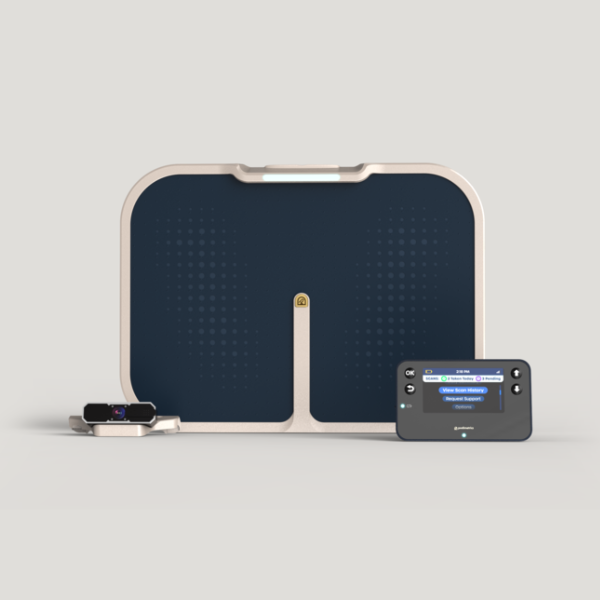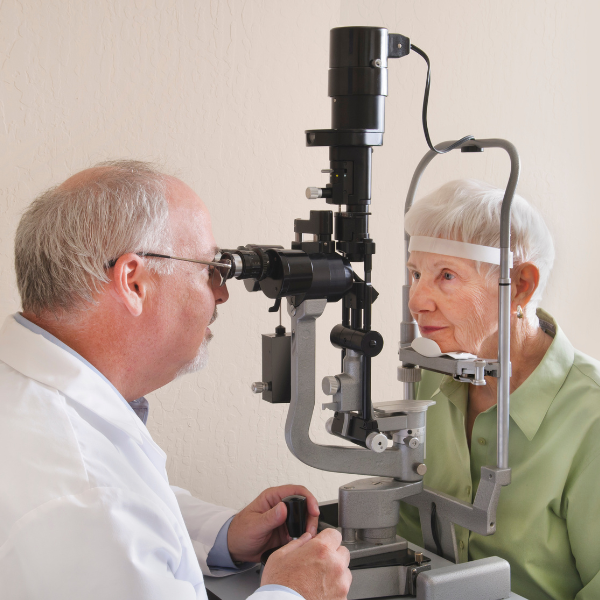Effective foot care plays a crucial role in the management of diabetes. Individuals with diabetes often face a higher risk of developing foot complications, including diabetic foot ulcers. These ulcers can lead to serious infections and even amputations if not detected and treated in a timely manner. To combat this potential threat, healthcare professionals emphasize the significance of proactive foot care.
In recent years, foot temperature monitoring has emerged as a valuable tool in diabetic foot care. Monitoring foot temperature can help identify early signs of foot problems, allowing for prompt intervention and prevention of complications.
Foot temperature monitoring has gained popularity among healthcare providers and patients alike as an effective means of proactive foot care. Let’s delve into the concept of monitoring foot temperatures and its many benefits in diabetes management.
What Is It?
Defining and Understanding the Purpose of Foot Temperature Monitoring
Foot temperature monitoring involves the regular measurement and tracking of the temperature of the feet, specifically in individuals with diabetes. The primary purpose of this monitoring technique is to detect early warning signs of potential foot complications, particularly diabetic foot ulcers. Various studies have shown that elevated temperatures may indicate ulceration.
Why Early Detection and Prevention of Diabetic Foot Ulcers Matters
Early detection and prevention of diabetic foot ulcers are paramount in diabetes management. Diabetic foot ulcers are open sores or wounds that commonly occur on the feet of individuals with diabetes. These ulcers often develop because of reduced blood flow, nerve damage (neuropathy), and compromised healing ability associated with diabetes.
Foot ulcers can be a gateway for serious infections, posing significant health risks. In severe cases, they can even lead to amputation. However, with timely detection and appropriate intervention, many diabetic foot ulcers can be prevented or effectively treated.
How Foot Temperature Monitoring Works
Monitoring foot temperature is based on the principle that changes in temperature may indicate developing foot problems. When inflammation, infection, or other abnormalities arise in the foot, it often leads to localized temperature variations. By consistently monitoring, these deviations can be identified, enabling early intervention and prevention of complications.
Specialized technologies, such as infrared thermography, smart insoles, and wearable devices, are utilized to measure and track foot temperature accurately. Healthcare professionals can utilize these tools to obtain valuable data for evaluating foot health and identifying the appropriate course of action.
Monitoring foot temperature regularly is crucial for people with diabetes, as well as their healthcare providers. Doing so enables them to identify potential foot issues early and take preventive measures quickly. Enhancing foot care strategies in this way reduces the risk of diabetic foot ulcers and complications. This gives patients the best health outcomes with guidance from a healthcare provider.
Next, let’s explore the advantages of foot temperature monitoring in more detail, highlighting the benefits it offers regarding diabetes management.
Advantages of Foot Temperature Monitoring
Foot temperature monitoring provides several advantages when it comes to early detection of potential foot complications in individuals with diabetes.
Reduced Risk of Diabetic Foot Ulcers
By monitoring foot temperature, even minor changes can be identified at an early stage. These changes may indicate inflammation, pressure points, or other factors that could lead to the development of diabetic foot ulcers. With early detection, appropriate interventions can be implemented to prevent the ulcers from forming in the first place.
Prevention of Serious Infections and Amputations
Diabetic foot ulcers are prone to infection, which can quickly escalate into severe health issues. By actively monitoring foot temperature, healthcare professionals can identify temperature variations that may indicate an underlying infection. Such a timely detection allows for prompt treatment, reducing the risk of infections spreading and potentially preventing the need for amputations.
Timely Intervention and Treatment
Foot temperature monitoring enables timely intervention and treatment, contributing to effective diabetic foot care management.
Prompt Medical Attention Based on Temperature Changes
Temperature fluctuations detected through monitoring can serve as an alert system, signaling the need for immediate medical attention. If there is a localized increase in foot temperature, it may indicate an inflammatory process, infection, or compromised blood flow. Such signs prompt healthcare professionals to assess the foot, provide appropriate treatment, and take preventive measures to halt further progression of complications.
Customized Foot Care and Treatment Plans for Specific Foot Concerns
Accurate foot temperature data enables healthcare providers to tailor treatment plans according to each individual’s unique foot condition. By considering temperature patterns, the underlying causes of temperature deviations can be identified.
This information assists in creating customized treatment plans that target specific foot problems, promoting effective healing and reducing the chance of recurring issues.
Next, is a deeper exploration of the technologies commonly used in foot temperature monitoring, including infrared thermography, smart insoles, and wearable devices. They each play a crucial role in administering a proactive approach to foot care.
Technologies Used in Foot Temperature Monitoring
Infrared Thermography and How It Works:
Infrared thermography involves using specialized cameras to detect and capture the infrared radiation emitted from the surface of the skin. These cameras create visual representations of the temperature distribution across the foot. The resulting thermal images display variations in foot temperature, highlighting potential areas of concern.
One of the significant advantages of infrared thermography is that it allows for non-contact and non-invasive temperature monitoring. This means there is no physical contact with the foot, making it a comfortable and convenient method for patients. It also reduces the risk of cross-contamination and is well-suited for regular monitoring in clinical settings.
Smart Insoles and How They Work:
Smart insoles are devices that incorporate temperature sensors embedded within the insole material. These sensors continuously monitor the foot temperature and transmit the data wirelessly to a connected device or smartphone application. The collected temperature information can be analyzed and tracked over time, providing valuable insights into foot health.
Benefits of smart insoles include real-time monitoring and pressure distribution analysis, measuring pressure while walking and fitting comfortably into most footwear.
Wearable Devices and How They Work:
Wearable devices for foot temperature monitoring typically consist of small, portable sensors that are attached to the foot or ankle. These sensors use advanced technology to measure and transmit foot temperature data to a connected device or smartphone application.
Benefits of wearable devices include portability and continuous monitoring. With uninterrupted foot-temperature monitoring, users can go about their daily routines while detecting subtle variations that may signal developing foot complications.
Incorporating these technologies into foot temperature monitoring enhances the accuracy, convenience, and effectiveness of proactive foot care. Now, we’ll delve into the best practices for foot temperature monitoring to optimize its benefits in diabetes management.
Best Practices
To make the most of foot temperature monitoring in diabetes management, it is essential to follow best practices for effective implementation and interpretation of the collected data.
Establishing a Regular Monitoring Routine:
Consistency is key for foot temperature monitoring. Establishing a regular monitoring routine ensures that temperature measurements are consistently obtained. Depending on the individual’s needs, healthcare professionals may recommend daily or weekly monitoring. Adhering to a routine enables the early detection of temperature changes and facilitates timely intervention.
Identifying Temperature Baseline for Each Patient:
It is crucial to establish a temperature baseline for each patient. This baseline serves as a reference point for future comparisons and aids in identifying temperature deviations. To establish a baseline value, measuring foot temperature when the body is stable, for instance, at rest, is recommended. Any significant deviations from this baseline can then be promptly addressed.
Recognizing Temperature Deviations and Abnormalities:
Healthcare professionals and patients should be familiar with the normal temperature range for healthy feet. This knowledge helps in recognizing temperature deviations and abnormalities that may indicate developing foot complications. Any noticeable increase or decrease in foot temperature, particularly in localized areas, should raise concerns and prompt further investigation.
Prompt Reporting to Healthcare Professionals:
Rapidly alerting healthcare professionals about temperature deviations is paramount. Any temperature changes outside the norm should be communicated with the healthcare team for thorough evaluation and appropriate guidance or treatment.
Wrapping It Up: The Final Verdict
By following these best practices, patients and their healthcare providers can maximize the benefits of foot temperature monitoring and proactively address potential diabetic foot complications. Regular monitoring, establishing baselines, recognizing abnormalities, and prompt reporting work together to ensure effective foot care management.
As a final point, closely tracking foot temperature is a crucial tool for managing diabetes and preventing or treating ulcers. Innovative technologies can help people with diabetes to monitor their condition. This can bring tremendous benefits. It enables early detection of foot complications, timely intervention, and customized treatment plans.
It is essential to talk to a healthcare expert for guidance regarding foot temperature monitoring and foot care. This will ensure that the advice is tailored to a patient’s individual needs.
Explore our clinical evidence page for a broad selection of research and data supporting the efficacy of foot temperature monitoring.





